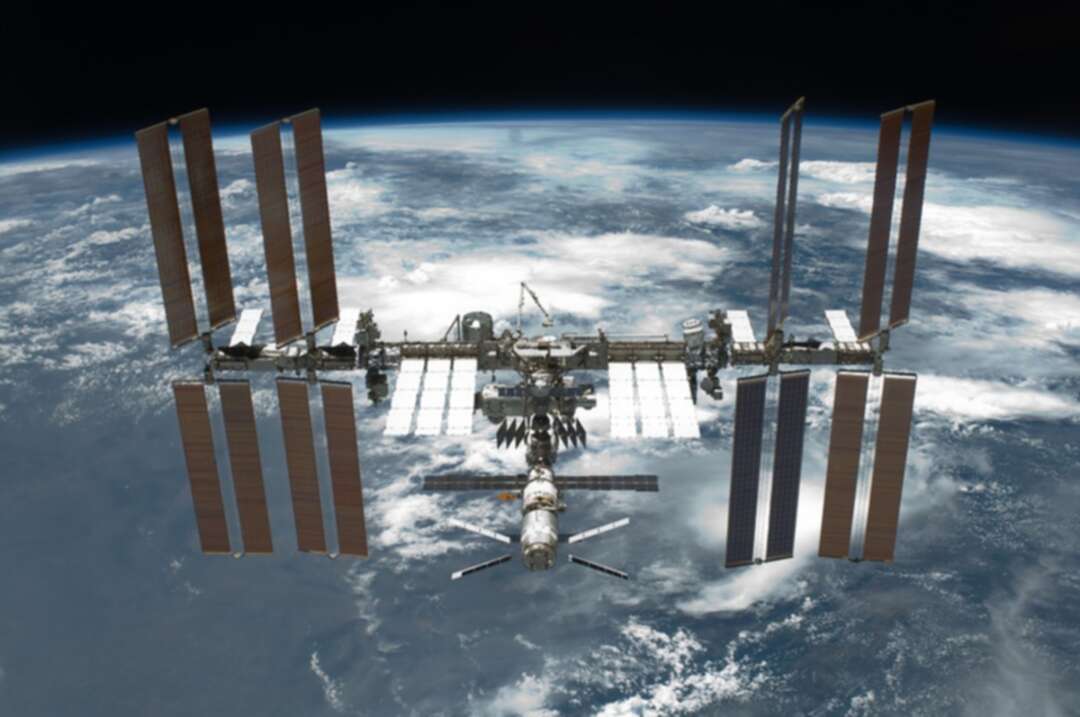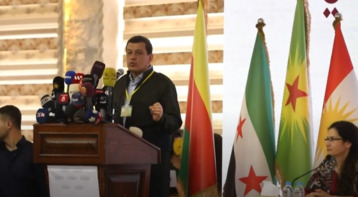-
Webb telescope arrives final cosmic destination to unravel Universe mysteries

The Arab News reported as per the AFP, NASA said Monday, the James Webb Space Telescope has arrived at its cosmic parking spot a million miles away, bringing it a step closer to its mission to unravel the mysteries of the Universe.
At around 2:00 p.m. Eastern Time (1900 GMT), the observatory fired its thrusters for five minutes to reach the so-called second Lagrange point, or L2, where it will have access to nearly half the sky at any given moment.
The report said that tdelicate burn added 3.6 miles per hour (1.6 meters per second) to Webb’s overall speed, just enough to bring it into a “halo” orbit around L2, 1.5 million kilometers from Earth.
NASA Administrator Bill Nelson in a statement: “Webb, welcome home!”
According to the report, Webb will begin its science mission by summer, which includes using its high resolution infrared instruments to peer back in time 13.5 billion years to the first generation of galaxies that formed after the Big Bang.

At L2, it will stay in line with the Earth as it moves around the Sun, allowing Webb’s sunshield to protect its sensitive equipment from heat and light.
For the giant parasol to offer effective protection, it needs the Sun, Earth and Moon to all be in the same direction, with the cold side operating at -370 degrees Fahrenheit (-225 Celsius).
NASA launches James Webb Space Telescope to probe universe origins
The thruster firing, known as an orbital burn, was the third such maneuver since Webb was launched on an Ariane 5 rocket on December 25.
The plan was intentional, because if Webb had gotten too much thrust from the rocket, it wouldn’t be able to turn around to fly back to Earth, as that would expose its optics to the Sun, overheating and destroying them.
It was therefore decided to slightly underburn the rocket firing and use the telescope’s own thrusters to make up the difference.
NASA begins process of bringing newly launched James Webb Space Telescope into focus
The burns went so well that Webb should easily be able to exceed its planned minimum life of five years, Keith Parrish Webb observatory commissioning manager told reporters on a call.
“Around 20 years, we think that’s probably a good ballpark, but we’re trying to refine that,” he said. It’s hypothetically possible, but not anticipated, that a future mission could go there and refuel it.
Webb, which is expected to cost NASA nearly $10 billion, is one of the most expensive scientific platforms ever built, comparable to the Large Hadron Collider at CERN, and its predecessor telescope, Hubble.
Nasa announces two new missions to Venus
But while Hubble orbits the Earth, Webb will orbit in an area of space known as a Lagrange point, where the gravitational pull from the Sun and Earth will be balanced by the centrifugal force of the rotating system.
An object at one of these five points, first theorized by Italian French mathematician Joseph-Louis Lagrange, will remain stable and not fall into the gravity well of the Sun and Earth, requiring only a little fuel for adjustments.
Webb won’t sit precisely at L2, but rather go around it in a “halo” at a distance similar to that between the Earth and Moon, completing a cycle every six months.
This will allow the telescope to remain thermally stable and to generate power from its solar panels.
Elon Musk rejects claims his satellites are taking up too much room in space
Previous missions to L2 include the European Space Agency’s Herschel and Planck observatories, and NASA’s Wilkinson Microwave Anisotropy Probe.
Webb’s position will also allow continuous communications with Earth via the Deep Space Network — three large antennas in Australia, Spain and California.
Earlier this month, NASA completed the process of unfolding Webb’s massive golden mirror that will collect infrared signals from the first stars and galaxies that formed a few hundred million years after the Universe began expanding.
Visible and ultraviolet light emitted by the very first luminous objects has been stretched by the Universe’s expansion, and arrives today in the form of infrared, which Webb is equipped to detect with unprecedented clarity.
China calls on US to protect its space station from satellites
Its mission also includes the study of distant planets, known as exoplanets, to determine their origin, evolution and habitability.
Next steps include aligning the telescope’s optics and calibrating its scientific instruments. It is expected to transmit its first images back in June or July.
Source: arabnews
You May Also Like
Popular Posts
Caricature
BENEFIT Sponsors BuildHer...
- April 23, 2025
BENEFIT, the Kingdom’s innovator and leading company in Fintech and electronic financial transactions service, has sponsored the BuildHer CityHack 2025 Hackathon, a two-day event spearheaded by the College of Engineering and Technology at the Royal University for Women (RUW).
Aimed at secondary school students, the event brought together a distinguished group of academic professionals and technology experts to mentor and inspire young participants.
More than 100 high school students from across the Kingdom of Bahrain took part in the hackathon, which featured an intensive programme of training workshops and hands-on sessions. These activities were tailored to enhance participants’ critical thinking, collaborative problem-solving, and team-building capabilities, while also encouraging the development of practical and sustainable solutions to contemporary challenges using modern technological tools.
BENEFIT’s Chief Executive Mr. Abdulwahed AlJanahi, commented: “Our support for this educational hackathon reflects our long-term strategic vision to nurture the talents of emerging national youth and empower the next generation of accomplished female leaders in technology. By fostering creativity and innovation, we aim to contribute meaningfully to Bahrain’s comprehensive development goals and align with the aspirations outlined in the Kingdom’s Vision 2030—an ambition in which BENEFIT plays a central role.”
Professor Riyadh Yousif Hamzah, President of the Royal University for Women, commented: “This initiative reflects our commitment to advancing women in STEM fields. We're cultivating a generation of creative, solution-driven female leaders who will drive national development. Our partnership with BENEFIT exemplifies the powerful synergy between academia and private sector in supporting educational innovation.”
Hanan Abdulla Hasan, Senior Manager, PR & Communication at BENEFIT, said: “We are honoured to collaborate with RUW in supporting this remarkable technology-focused event. It highlights our commitment to social responsibility, and our ongoing efforts to enhance the digital and innovation capabilities of young Bahraini women and foster their ability to harness technological tools in the service of a smarter, more sustainable future.”
For his part, Dr. Humam ElAgha, Acting Dean of the College of Engineering and Technology at the University, said: “BuildHer CityHack 2025 embodies our hands-on approach to education. By tackling real-world problems through creative thinking and sustainable solutions, we're preparing women to thrive in the knowledge economy – a cornerstone of the University's vision.”
opinion
Report
ads
Newsletter
Subscribe to our mailing list to get the new updates!






















